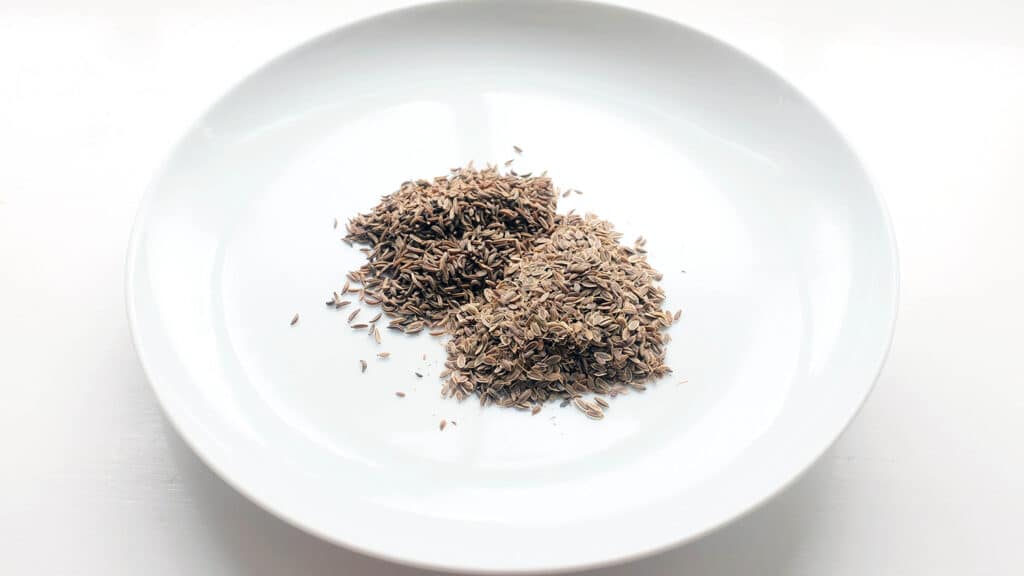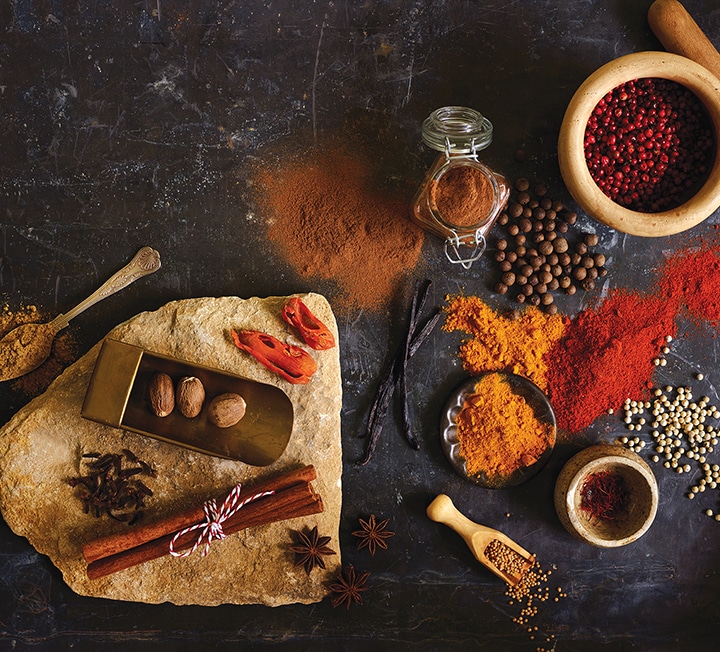The spice series: caraway & dill seeds
Ed Smith takes an in-depth look at the many spices available at the Market. This time: caraway and dill seeds


“CARAWAY IS SYNONYMOUS WITH SEED CAKE, TRADITIONALLY MADE IN EAST ANGLIA TO CELEBRATE THE END OF WHEAT-SOWING”
In this article, we look at one ‘seed’ spice that, while well known, is in fact not a seed, and another lesser-known seed, which is worth becoming better acquainted with.
Smelling either of them immediately conjures up memories of pickles and rye bread, as they’re intrinsically linked with the food of Scandinavia, and central and eastern Europe. This may or may not be a good thing for you – while some people love caraway and dill seeds, others can’t stomach them.
Caraway
Many of our most commonly bought spices originated in Asia and were staples of the ancient spice trade from the east. Not so caraway, which though an important spice for centuries, is native to central Europe and the Caucasus. It’s now grown all over the world, including in Egypt and Canada, but the countries where it’s used most often relate to its roots.
Caraway looks like a seed but is actually the fruit of the Apiaceae plant family. It resembles the cumin seed in shape, if perhaps a little darker and less plump, and indeed is sometimes known as ‘Persian cumin’.
There’s lots going on when you taste caraway. People say liquorice (so, anise), which is true. There’s a mustiness and some citrus. I find a bitterness, too, which I suspect is one reason why some people don’t get on with it.
Ultimately, though, caraway is distinctive. It tastes of… well, it tastes of caraway – a pungent flavour that reminds you of cabbage and rye bread, because those things so often involve that very same flavour.
Historically, it was believed to be a particularly good aid to digestion – a factor in caraway being such a common partner to cabbage, fermented or otherwise.
The ‘seeds’ keep very well for a long time and are often just used whole. By toasting them in a dry pan, or tempering with a little oil, some of the aroma will become more pronounced. But it’s not always necessary (or desirable) to do that. You can also grind or pound caraway into a dust as you would any other spice, should you want to avoid having too many things stuck between your teeth.
Dill seeds
Dill seeds are exactly that: the seeds of a dill plant, which appear when dill is left to flower and then those flowers die back and go to seed.
Like caraway, dill is a member of the Apiaceae family (as are chervil, parsley, carrot and anise), so it’s no coincidence that the smell and flavour of these flat, tear-shaped, green-brown seeds is remarkably similar to the aforementioned spice. Perhaps the anise notes and bitterness are softer, and there’s a hint of dill herb too, but these two spices are pretty close and could be used interchangeably.
Unlike caraway, barely anyone knows about or uses dill seeds, perhaps because dill itself is so popular as a herb that it’s generally harvested well before flowering time. Yet the seeds provide an excellent background flavour, and would be particularly successful at times when caraway might seem appropriate, but possibly too powerful.
Dill seeds come to the fore when infused into liquid – whether that’s a brine for fermentation or curing, or an oil or vinegar. They’re also strong as an aromatic in leavened and flat breads. John O’Connell’s The Book of Spice notes that dill seed vinegar is a popular addition to fish stews in Russia and Scandinavia, but also that the seeds pulled an Uzbek recipe for fried flatbread with pork crackling from “what could easily be a stodgy nightmare back from the brink of indigestibility”.
The seeds keep pretty well for a reasonable amount of time and are generally used whole, with no need for grinding. Again, if toasted in a dry pan or tempered in warm oil, more oils will be released.
Culinary uses
Caraway’s classic uses include being mixed into or scattered over Scandinavian rye breads and crackers. It is also vital in those relatively cold countries because it is infused into aquavit, an essential and warming spirit.
This spice is also a key aromatic for pickling brines, particularly for fermented cabbage (sauerkraut), popular in Austria, Germany, Poland and Ukraine.
But caraway is used in other cultures too, including for mughli, a sweet, gooey Lebanese pudding based on rice flour and caraway (plus a hint of anise and cinnamon), which is traditionally made to celebrate births. In India, you might find caraway tempered in oil and spooned over a tadka dal at the last minute before serving.
And in Britain, caraway is synonymous with seed cake, traditionally made in East Anglia to celebrate the end of wheat-sowing, and something that’s been the staple of homemakers since the 18th century. These days, that cake is likely to be paired with some orange or lemon zest, to make it appeal to modern tastes.
Dill seeds don’t enjoy such an obvious culinary history, but could well be used interchangeably with caraway: cabbage, fermented cabbage and rye breads are right up there, and I find flat breads, oils and dairy flavoured with caraway or dill seeds to be a super match for smoked salmon. The spices are also excellent at lifting pork dishes, whether a slow roast shoulder, a Ukrainian stew or a German sausage. A hit of lemon or orange is often beneficial – something about the acidity prevents caraway or dill seeds from being overpowering. And I’m also a huge fan of these seeds in or on sharp, lactic cheeses, particularly when honey is involved as a condiment.
Specific recipes to look out for
It has been pretty tricky tracking down recipes using dill seeds, but you could swap them for caraway in any of the following:
— My bible for all things interesting is Bar Tartine: Techniques and Recipes, and it comes up trumps in the hunt for these spices. I love the idea of caraway oil – an infusion of toasted, crushed seeds in sunflower or grapeseed oil. But maybe I love the idea of caraway-infused honey more, particularly when it’s to be drizzled over some feta, or a cheesecake.
— For something a little bit different, consider baking the beetroot and caraway (or dill seed) cake in Hugh Fearnley-Whittingstall’s Love Your Leftovers.
— How about making your own sauerkraut? Skye Gyngell’s version in Spring uses red cabbage rather than white, and requires 1 tbsp caraway seeds. As with all things fermented, you’ll need a little patience before you can sample your prize, but I think it’s worth it. — If you’d prefer more immediate caraway satisfaction, have a look at my Tiroler gröstl recipe. This Austrian fry-up of potatoes, bacon and an onion, topped with a fried egg, seems pretty similar to an English morning-after recovery dish. But a spoonful of caraway seeds transforms the flavours, lifting it, and ultimately making what I think is the very best skiers’ lunch available.


